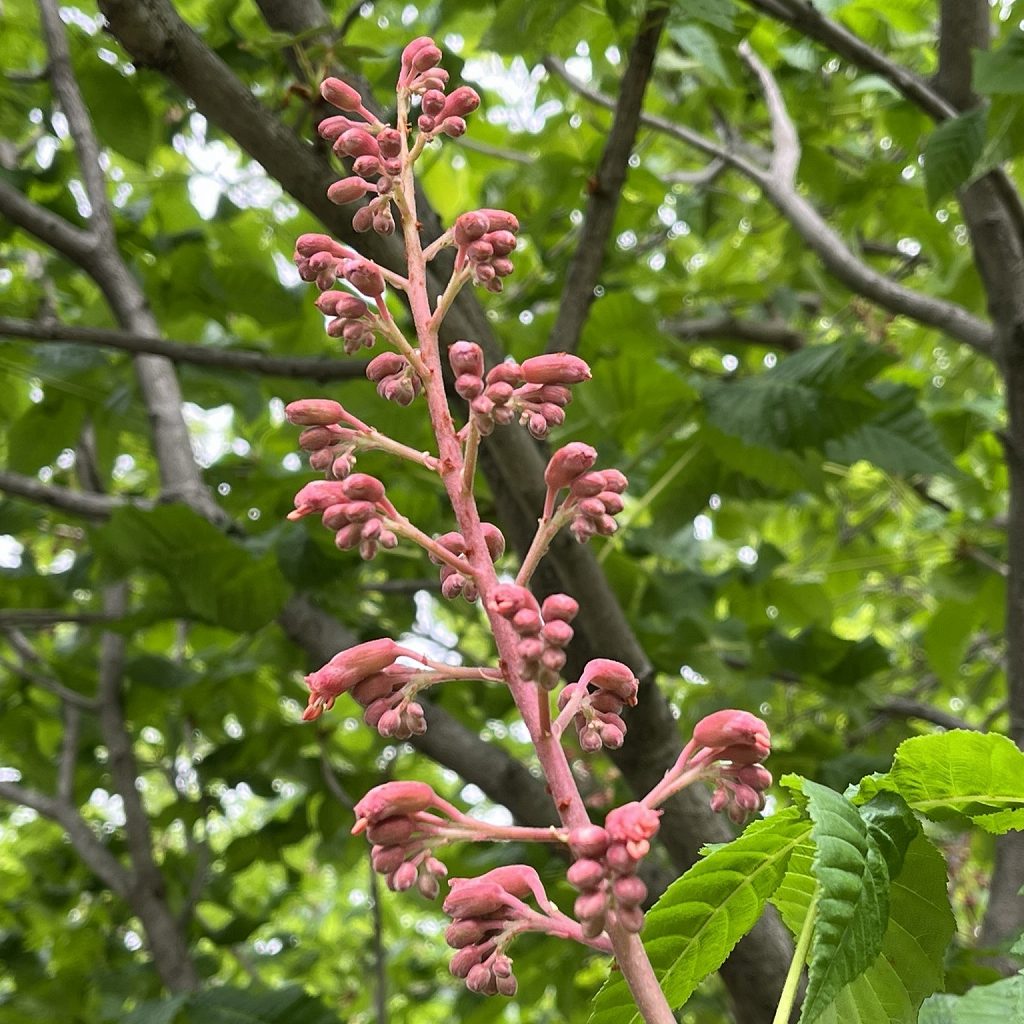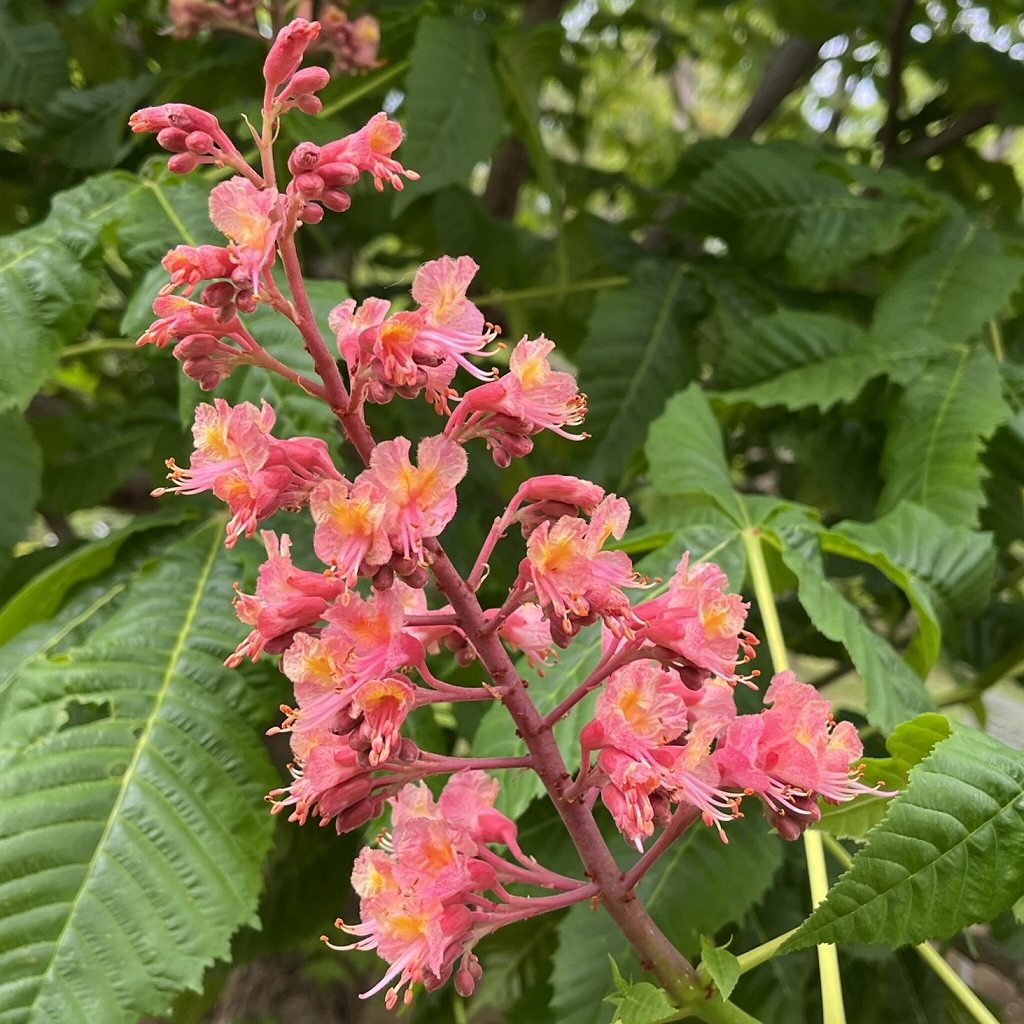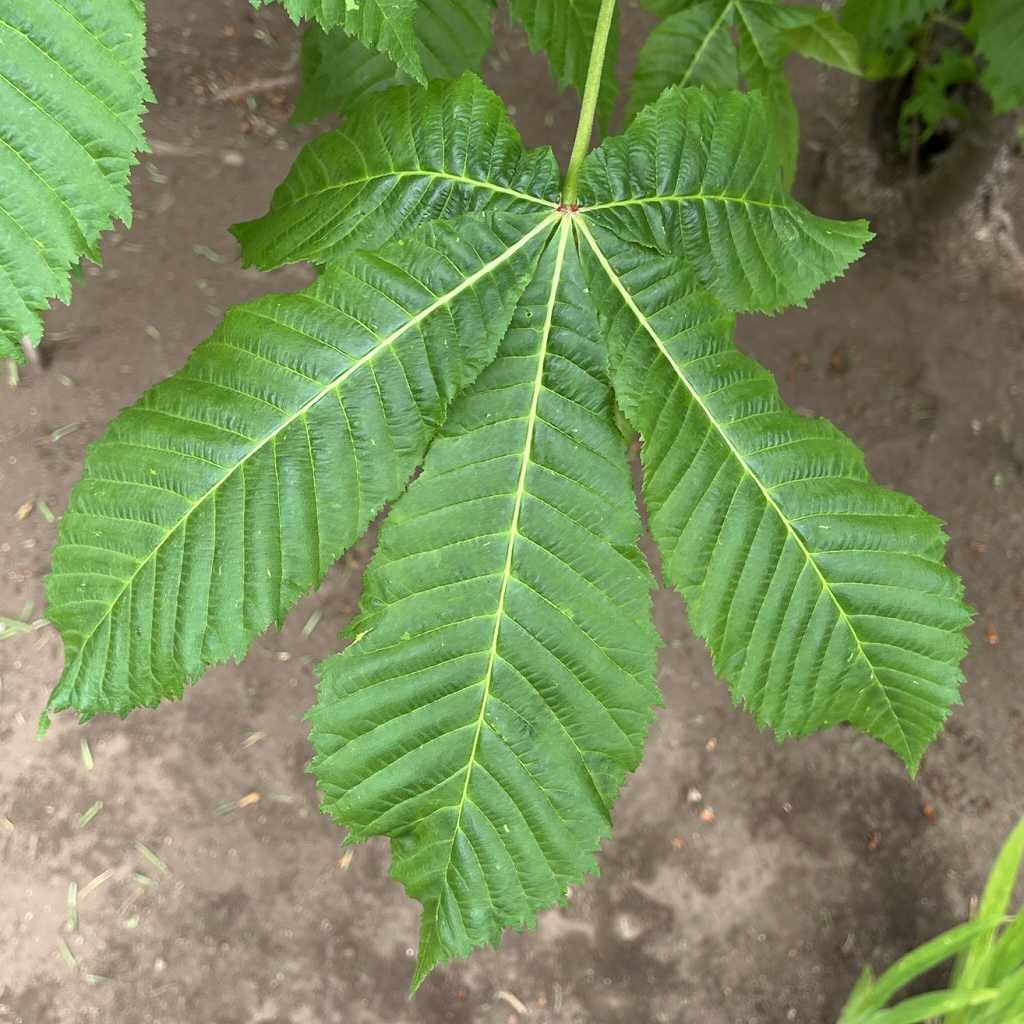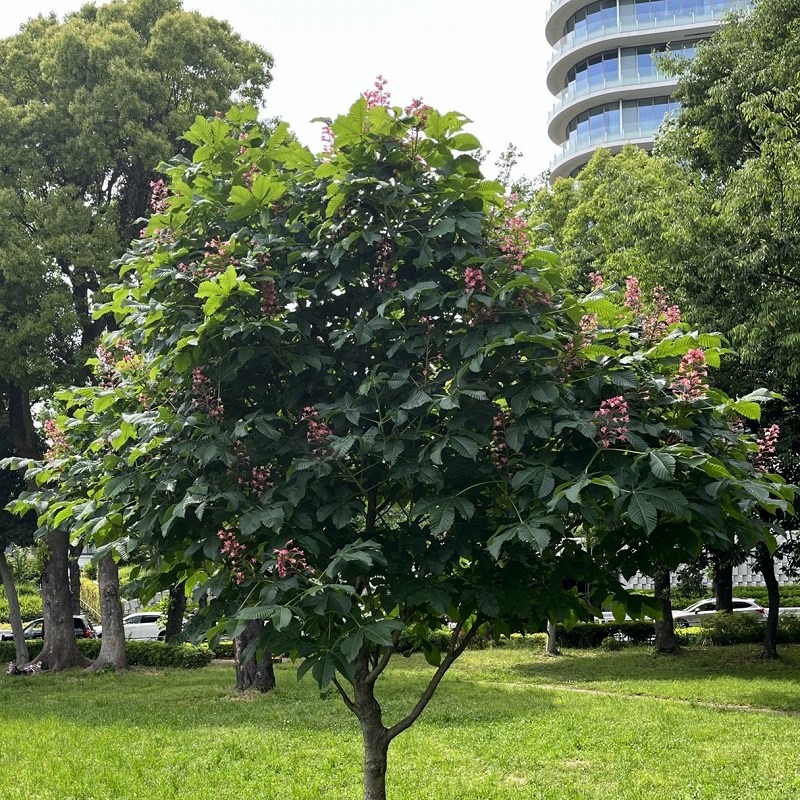ベニバナトチノキはアメリカ紅花栃の木と西洋栃の木の交配種。花穂は桃色の小花が枝先に集まり、尖がり帽子のような形で咲き上がります。
Red Horse Chestnut is a hybrid of Aesculus pavia and Aesculus hippocastanum. As for the flower spikes, small pink flowers gather at the tip of the branch and bloom in a shape like a pointed hat.
【仮名】ベニバナトチノキ
【和名】紅花栃の木
【英名】Red Horse Chestnut
【学名】Aesculus x carnea
【誕生】05/ 12
【開花】04, 05月
【花色】Pink






ベニバナトチノキ
ベニバナトチノキの概要
ベニバナトチノキはトチノキ科の落葉高木です。北米原産の「アメリカ紅花栃の木」と欧州原産の「西洋栃の木」の交配種で、日本へは大正時代の末期に渡来。ラテン語の属名アエスクルスは「食べる」という意味で堅果に、種小名カルネアは「肉色の」という意味で花に由来します。
ベニバナトチノキの姿形
ベニバナトチノキは冬芽に「栃の木」のような粘り気がありません。葉は大きな掌状の複葉で、葉脈に沿って皺が寄り、縁に鋸歯が入って対生。花穂は桃色の小花が枝先に集まり、尖がり帽子のような形で咲き上がります。小花は花弁が4枚、雄しべが7本。堅果に短い棘があります。
ベニバナトチノキとアメリカ紅花栃の木
ベニバナトチノキの交配親「アメリカ紅花栃の木」は原産地が北米の南東部。トチノキ属では木が低く、冬芽に粘り気がなく、葉が小ぶりで、花が深紅で筒状のまま開かず、堅果に棘がありません。日本での植栽は少ないものの、北米では花を養蜂の蜜源に、堅果を家畜の飼料に利用。
ベニバナトチノキと西洋栃の木
ベニバナトチノキの交配親「西洋栃の木」は原産地がバルカン半島~トルコの森林地帯。トチノキ属では木が高く、葉の縁に鋸歯が入り、花が乳白色~薄桃色で大きく、堅果に長い棘があります。丈夫で寿命も長く、街路樹などに利用。フランス語の植物名「マロニエ」で呼ばれます。
ベニバナトチノキと栃の木
ベニバナトチノキの近縁種「栃の木」は原産地が日本で、北海道から本州、四国、九州まで分布。トチノキ属では木が大きく、冬芽に粘り気があり、葉の縁が丸く、花が黄白色で、堅果に棘がありません。庭木や並木で植えられるほか、堅果を食用や薬用にし、材を盆や鉢などに利用。
Red Horse Chestnut
Overview of Red Horse Chestnut
Red Horse Chestnut is a deciduous tree of Hippocastanaceae family. It is a cross between Aesculus pavia native to North America and Aesculus hippocastanum native to Europe, and was introduced to Japan in the late Taisho period. The Latin genus name Aesculus means “to eat”, derived from nut, and the specific epithet Carnea, meaning “skin coloured”, derived from flower.
Shape of Red Horse Chestnut
The winter buds of Red Horse Chestnut are not sticky like Aesculus turbinata. The leaves are opposite, large, palmate compound leaves with wrinkles along the veins and serrated edges. As for the flower spikes, small pink flowers gather at the tip of the branch and bloom in a shape like a pointed hat. The florets have 4 petals and 7 stamens. Nuts have short spines.
Aesculus pavia and Red Horse Chestnut
The crossing parent of Red Horse Chestnut “Aesculus pavia” is native to the southeastern part of North America. Among the genus Aesculus, the trees are low, the winter buds are not sticky, the leaves are small, the flowers are deep red and do not open in a tubular shape, and the nuts are spineless. Although it is rarely planted in Japan, in North America the flowers are used as a nectar source for beekeeping, and the nuts are used as feed for livestock.
Aesculus hippocastanum and Red Horse Chestnut
The crossing parent of Red Horse Chestnut “Aesculus hippocastanum” is native to the forest area from the Balkan Peninsula to Turkey. Among the genus Aesculus, the trees are tall, the edges of the leaves are serrated, the flowers are milky white to pale pink, and the nuts have long spines. It is durable and long-lived, and is used as a roadside tree. It is called by the French botanical name “Marronnier”.
Aesculus turbinata and Red Horse Chestnut
The closely related species of Red Horse Chestnut “Aesculus turbinata” originated in Japan and is distributed from Hokkaido to Honshu, Shikoku and Kyushu. Among the genus Aesculus, the trees are large, with sticky winter buds, rounded leaf margins, yellowish-white flowers, and spineless nuts. In addition to being planted in garden trees and rows of trees, the nuts are used for food and medicine, and the wood is used for trays and pots.


